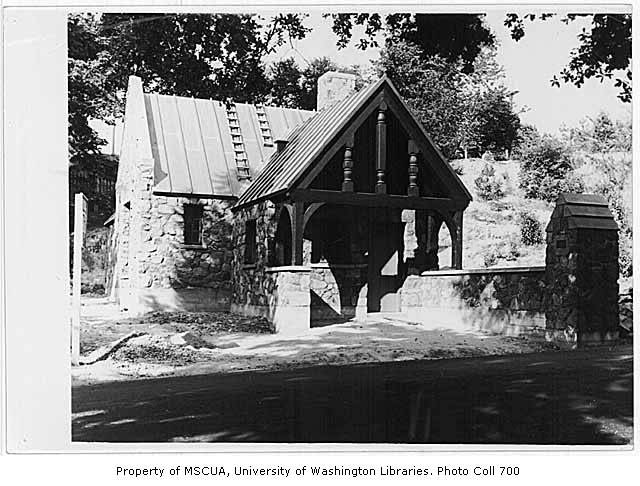The land in Washington Park was logged in the late 19th century, though not extensively. It was essentially left fallow afterward. Over the next few decades, the forest began to grow back. The logged areas became populated with red alder, big leaf maple, vine maple, dogwood, willow and cottonwood. The rest of the Park was populated by western hemlock, Douglas fir, and western red cedar.

Courtesy of the City of Seattle Municipal Archives, 30540.
In 1933, the Public Works Administration did some rough clearing in Washington Park, but it was not until 1935 that real progress began. Early that year, Washington’s governor, Clarence Martin, was faced with rising unemployment rates as a result of the Great Depression. He appealed to Loren Grinstead, one of his advisors, for suggestions on the possible use of state funds to ease the unemployment situation. The answer was suggested by Grinstead’s wife Edna, who posed the question, “Why not the Arboretum?”
It was a perfect solution; the work site was close to Seattle’s urban center, so that workers could report to the work site for a day’s labor and return home for dinner the same evening. And the work required no specialized skills.

Courtesy of the City of Seattle Municipal Archives, 30545
Governor Martin proposed the Arboretum as a candidate for additional Works Progress Administration (WPA) funding to Washington Senator Lewis B. Schwellenbach, who approached the WPA with the suggestion. The Arboretum was designated an official project of the WPA, which authorized the employment of 800 workers at a cost of $1.5 million.
The WPA funding helped to develop the Arboretum substantially. Fred Leissler was appointed by College of Forestry Dean Winkenwerder to take over development of the Arboretum. Leissler stated, “Where Azalea Way now exists was an ugly cut-and-fill speedway for horse racing; 10,000 or more man-hours of hand labor with wheelbarrows were used to bring back the original land contours; 500 rail road cars of cow manure and leafmold were spaded into those land forms to make the present Azalea Way as beautiful as it is.”
The WPA funding allowed for the development of significant aspects of the Arboretum. In addition to trail construction, a substantial amount of stonework was completed, including a rock garden, stone bridge to the Pinetum, and the basalt gateposts at the north and south entrances to the Park.
